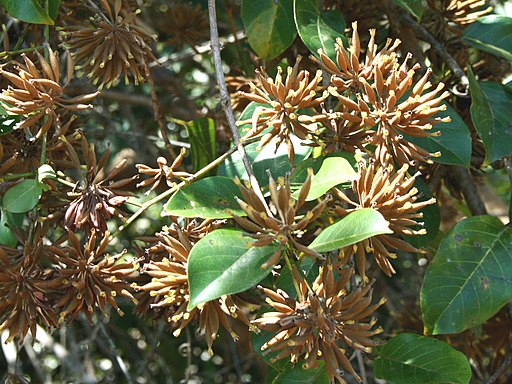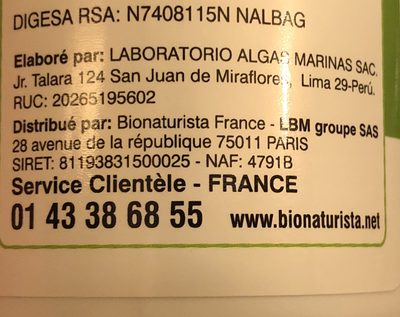
Cat’s claw (Unacaria tomentosa) there are many plants that have the common name of cat’s claw, although only two have it because of their particular characteristics: Uncaria tomentosa, called cat’s claw or yellow cat’s claw, and Unacaria guianensis, known as red cat’s claw.
Both are known in the basin as unganangi, which is an indigenous voice, probably Asháninka.
In Brazil it is called cipó de gato. However, although both species have the same name, they have some more or less notable differences.
Cat’s Claw Products
Cat’s Claw Characteristics
The most distinctive feature of both plants is that they have thorns similar to cat claw nails, hence the name.
But while U. guianensis has recurved spines, those of U. tomentosa are straighter.
Uncaria tomentosa is the more appreciated and better known of the two cat’s claws. It is a climbing plant, belonging to the Rubiaceae family, whose primary center of origin is probably the Peruvian Amazon jungles.
It grows in fertile soils, with plenty of rainfall, at an optimum altitude range between 250 and 900 meters above sea level. Its trunk is woody and has thorns that it uses as a hook to cling to trees and shrubs as if it were a cat with its claws.

Vangeliq.petrova / CC BY-SA
Where cat’s claw is grown
Both species are found in the Amazon basin, but also outside of it.
While Unacaria tomentosa is more frequent between 400 and 800 meters above sea level, Unacaria guainensis usually grows in lower regions. One or the other is relatively abundant in much of the Amazon.
In some areas of the Peruvian Amazon, such as Manu, up to 80 plants per hectare have been found.
Is cat’s claw endangered?
Overexploitation, which led to a sort of economic boom in correspondence with its reputation as a wonderful medicinal plant, to which are attributed properties, not sufficiently proven, for the cure of many ailments, the plant has been subjected to a depredation that threatens its population.
It depends on how it is used. The two most frequent uses in folk medicine are the bark of the trunk or the root. The second way involves the death of the plant.

Vojtěch Zavadil / CC BY-SA
It can reach up to 20 meters in height. It is used as a medicine by many indigenous communities, especially the Asháninka of the Peruvian Amazon.
What is Cat’s Claw good for?
One of the best known medicinal plants of the Amazon, its bark is used to cure asthma, or at least alleviate it, and to treat urinary tract disorders.
But it is also used to combat many ailments: to heal wounds and gastric ulcers, to recover from postpartum problems, to use it to cleanse the kidneys, to soothe arthritis, rheumatism and bone pain.
But its most promising use is for the cure of cancer. So many supposedly effective properties have stimulated that Unacaria tomentosa has been the subject of much scientific research, especially in large laboratories in industrialized countries.
Pharmacological properties of Cat’s Claw.
A wide variety of pharmacological, toxicological and even nutritional compounds have been detected, such as flavonoids, glycosides and polyunsaturated fatty acids.
So much fame has made it available in many pharmacies and popular medicine outlets in three presentations: powder for infusions, tablets and liquid extract.
As a result of these investigations, it has been found that both the bark and the root have a high content of antioxidant substances.
They are alkaloids such as oxindole and isopteropodine or isomer A, its most active ingredient, used as antibacterial, antifungal and antiviral.

Scientific research
Scientists from the Universidad Nacional Mayor de San Marcos in Lima and the Catholic University of the Sacred Heart in Rome found five types of alkaloids: pteropodine, isopteropodine, speciofiline, uncaria Fe somitrafiline.
They also found polyphenols, such as epicatechin and four procyanidins.
Studies have shown that some of the properties attributed to cat’s claw by folk medicine have been confirmed by science, such as its anti-inflammatory and immune system stimulating properties.
An exhaustive list of the research carried out on the two Uncaria, and its results, was presented by Dr. Fernando Cabieses, in his book La Uña de Gato y su Entorno.
De la Selva a la Farmacia (1997), in which he warns against unscrupulous medicine traders who have created false expectations about the healing power of the two species of Uncaria: tomentosa and guianensis.
Bibliography
Cabieses, F. 1997. Cat’s Claw and its Environment. From Jungle to Pharmacy. Lima: Universidad de San Martín de Porres. 2nd. ed.
Goncalves C., Dinis T., Batista M.T. 2005. Antioxidants properties anthocyanidins of Uncaria tomentosa bark decoction: a mechanism for anti-inflammatory activity. Phytochemistry, Vol. 66 (1), 89-98, January.
Pilaski R., Zielinski H., Ciesolka D., Geruwicz K. 2006. Antioxidant activity of ethanolicic and aqueous extract of Uncaria tomentosa Willd. Journal of Ethno pharmacology, Vol. 904 (1-2), 18-23, March.
Sandoval M, et al. 2002. Anti-inflammatory and antioxidants activities of cat claw (Uncaria tomentosa and Uncaria guainensis) are independent of their alkaloids content. Fhytomedicine, Vol. 9 (4), 325-337.
Valerio L.G., Gonzáles G.F. 2005. Toxicology aspects of the South America Herb Cat Claw (Uncaria tomentosa) and Maca (Lepidon meyenii). Toxicological Review, 24, 11-35.
Zevallos-Pollito P.A. 2003. Pharmacological characterization of cat’s claw (Uncaria tomentosa) and Uncaria guainensis seedlings from the Alexander Von Humboldt National Forest. Ecología Aplicada, Vol. 2 (1), Lima, January-December.

Dr. Rafael Cartay is a Venezuelan economist, historian, and writer best known for his extensive work in gastronomy, and has received the National Nutrition Award, Gourmand World Cookbook Award, Best Kitchen Dictionary, and The Great Gold Fork. He began his research on the Amazon in 2014 and lived in Iquitos during 2015, where he wrote The Peruvian Amazon Table (2016), the Dictionary of Food and Cuisine of the Amazon Basin (2020), and the online portal delAmazonas.com, of which he is co-founder and main writer. Books by Rafael Cartay can be found on Amazon.com
This post is also available in:
![]() Español (Spanish)
Español (Spanish)
